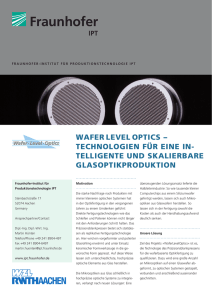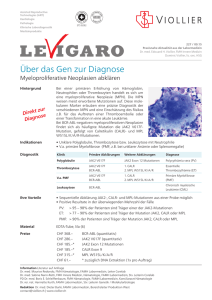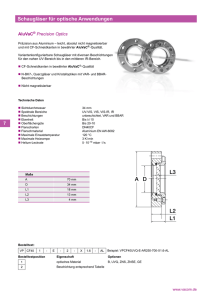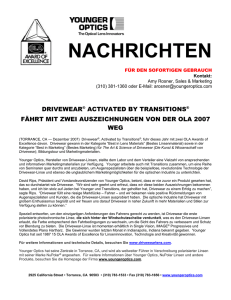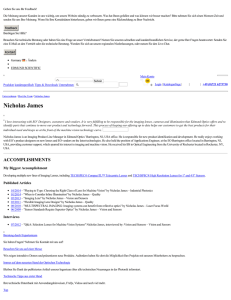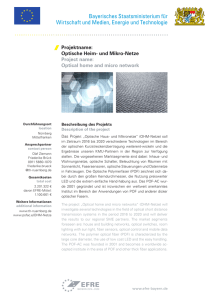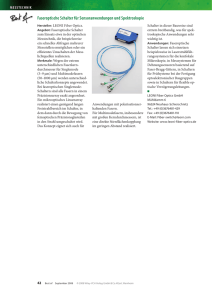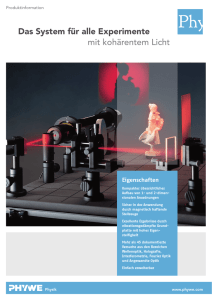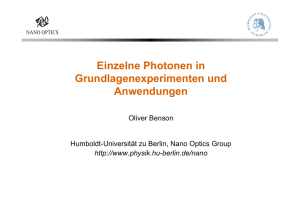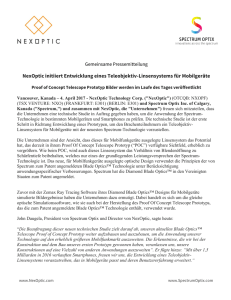Max-Planck-Institut für die Physik des Lichts
Werbung
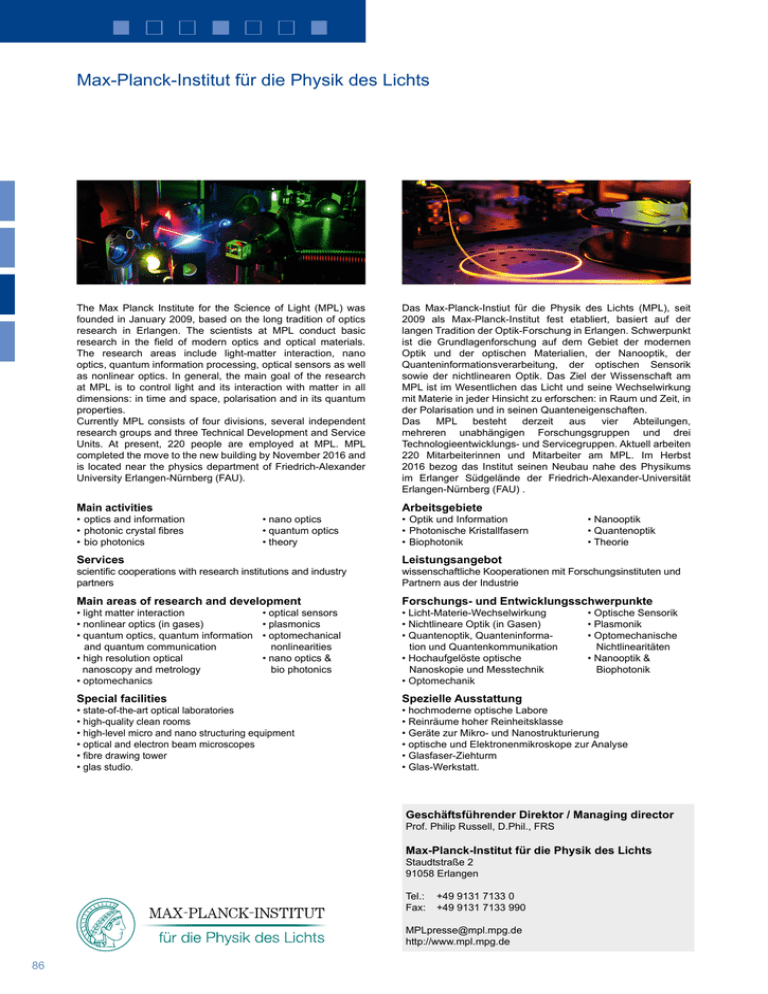
Max-Planck-Institut für die Physik des Lichts The Max Planck Institute for the Science of Light (MPL) was founded in January 2009, based on the long tradition of optics research in Erlangen. The scientists at MPL conduct basic research in the field of modern optics and optical materials. The research areas include light-matter interaction, nano optics, quantum information processing, optical sensors as well as nonlinear optics. In general, the main goal of the research at MPL is to control light and its interaction with matter in all dimensions: in time and space, polarisation and in its quantum properties. Currently MPL consists of four divisions, several independent research groups and three Technical Development and Service Units. At present, 220 people are employed at MPL. MPL completed the move to the new building by November 2016 and is located near the physics department of Friedrich-Alexander University Erlangen-Nürnberg (FAU). Das Max-Planck-Instiut für die Physik des Lichts (MPL), seit 2009 als Max-Planck-Institut fest etabliert, basiert auf der langen Tradition der Optik-Forschung in Erlangen. Schwerpunkt ist die Grundlagenforschung auf dem Gebiet der modernen Optik und der optischen Materialien, der Nanooptik, der Quanteninformationsverarbeitung, der optischen Sensorik sowie der nichtlinearen Optik. Das Ziel der Wissenschaft am MPL ist im Wesentlichen das Licht und seine Wechselwirkung mit Materie in jeder Hinsicht zu erforschen: in Raum und Zeit, in der Polarisation und in seinen Quanteneigenschaften. Das MPL besteht derzeit aus vier Abteilungen, mehreren unabhängigen Forschungsgruppen und drei Technologieentwicklungs- und Servicegruppen. Aktuell arbeiten 220 Mitarbeiterinnen und Mitarbeiter am MPL. Im Herbst 2016 bezog das Institut seinen Neubau nahe des Physikums im Erlanger Südgelände der Friedrich-Alexander-Universität Erlangen-Nürnberg (FAU) . Main activities Arbeitsgebiete • optics and information • photonic crystal fibres • bio photonics • nano optics • quantum optics • theory Services scientific cooperations with research institutions and industry partners • Optik und Information • Photonische Kristallfasern • Biophotonik • Nanooptik • Quantenoptik • Theorie Leistungsangebot wissenschaftliche Kooperationen mit Forschungsinstituten und Partnern aus der Industrie Main areas of research and development Forschungs- und Entwicklungsschwerpunkte Special facilities Spezielle Ausstattung • light matter interaction • nonlinear optics (in gases) • quantum optics, quantum information and quantum communication • high resolution optical nanoscopy and metrology • optomechanics • optical sensors • plasmonics • optomechanical nonlinearities • nano optics & bio photonics • state-of-the-art optical laboratories • high-quality clean rooms • high-level micro and nano structuring equipment • optical and electron beam microscopes • fibre drawing tower • glas studio. • Licht-Materie-Wechselwirkung • Nichtlineare Optik (in Gasen) • Quantenoptik, Quanteninformation und Quantenkommunikation • Hochaufgelöste optische Nanoskopie und Messtechnik • Optomechanik • Optische Sensorik • Plasmonik • Optomechanische Nichtlinearitäten • Nanooptik & Biophotonik • hochmoderne optische Labore • Reinräume hoher Reinheitsklasse • Geräte zur Mikro- und Nanostrukturierung • optische und Elektronenmikroskope zur Analyse • Glasfaser-Ziehturm • Glas-Werkstatt. Geschäftsführender Direktor / Managing director Prof. Philip Russell, D.Phil., FRS Max-Planck-Institut für die Physik des Lichts Staudtstraße 2 91058 Erlangen Tel.: Fax: +49 9131 7133 0 +49 9131 7133 990 [email protected] http://www.mpl.mpg.de 86
